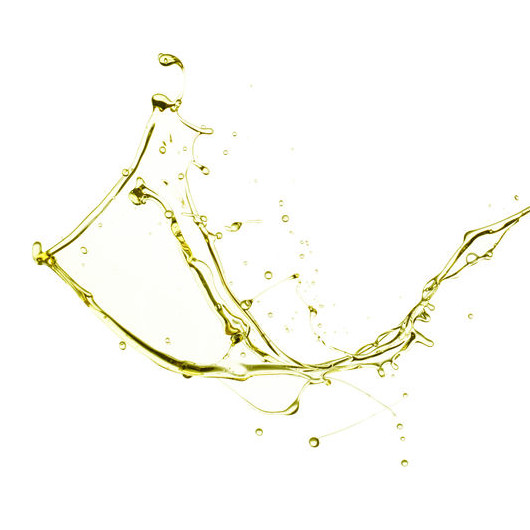
Mineral Oil
Also known as liquid paraffin, food grade mineral oil, or white mineral oil
What is Mineral Oil?
Mineral oil is a common ingredient with a variety of uses. It has applications in the baking industry, as well as industrially, medically, and in cosmetic products. Food grade mineral oil is safe for consumption in very small amounts.
- It is a clear, colorless, tasteless and odorless liquid that does not react with foods.1
- Since it is insoluble in water and does not change scent or color when heated, it is a very useful lubricant for food processing equipment.
Origin
Mineral oil is derived from crude oil, which is natural hydrocarbon complex extracted from the ground. Crude oil is distilled to produce fuel, gasoline, lubricants and other products. Colonel Edwin Drake first discovered oil in Pennsylvania in 1859, but his discovery did not dramatically change the world until the demand for motorized transportation during the first World War.2
Nutrition
Mineral oil is chemically inert and not absorbed by the body.3
Commercial Production
Crude petroleum oil is distilled at atmospheric pressure, then under vacuum to yield vacuum distillates and residual fractions that are further refined to mineral oil. Mineral oil consists of variable straight and branched chain hydrocarbons consisting of 15-50 carbons.4
The manufacturer sets up processing to assure that the oil meets the standards to qualify to be used in food in the United States (21 C.F.R.§ 178.878 2018):
- Meets the test requirements of the United States Pharmacopeia XX (1980) for carbonizable substances.
- Meets the test requirements of the United States Pharmacopeia XVII for sulfur compounds
- Meets the specifications prescribed in the Journal of the Association of Official Analytical Chemists, volume 45
Application
Mineral oil can have several functions in the baking industry. It is a good lubricant and release agent for food applications because it protects equipment without degradation, is non-toxic, has no flavor and functions well under both hot and cold temperature extremes.
Other edible oils, such as vegetable oil can polymerize and build up sticky residue. Also, vegetable oils, such as soy oil, require allergen labeling.
- Lubricant: Lubricants seal and protect equipment from residue accumulation, weakening and corrosion.They also make equipment easier to clean by preventing heavy soiling and sticking of food residue to equipment.
- Trough Grease: In order to maintain efficiency and lessen clean up, a mineral oil mix can be used as a release agent.5 Application of the oil on the walls of the trough allows the dough to transfer efficiently to the dough divider.
- Dough Dividing: This process of cutting is an essential process for yeast-leavened bakery products. Mineral oil can coat cutting knives3 to prevent sticking and maintain an efficient and accurate dividing operation.
- Release agent: For uniform quality of baked goods such as breads, cakes, cookies and pizza, a release agent is necessary. Properly applied mineral oil provides for consistent release of baked products from pans or oven bands.
Regulations
In the United States, mineral oil is:
- Permitted as a food additive for direct human consumption. In bakery products it is allowed as a release agent and lubricant not to exceed 0.15%. (21 C.F.R. § 172.878 2018)
- Permitted as an indirect food additive intended for use as a component of a non-food article in contact with food. (21 C.F.R. § 178.3260 2018)
- Exempt from food labeling requirements when used as a processing aid. (21 C.F.R. § 101.100(a)(2)(ii)(c) 2018)
References
- FAO. “Mineral Oil (High Viscosity)”, Combined Compendium of Food Additive Specifications. 2006. www.fao.org/fileadmin/user_upload/jecfa_additives/docs/Monograph1/Additive-282-rev.pdf. Accessed on 5 Jan. 2019.
- The Environmental Literacy Council. “Petroleum History”, www.fao.org/fileadmin/user_upload/jecfa_additives/docs/Monograph1/Additive-282-rev.pdf. Accessed on 5 Jan. 2019.
- FAO. FAO Nutrition Meetings Report Series No. 48A WHO/FOOD ADD/70.39.www.inchem.org/documents/jecfa/jecmono/v48aje08.htm. Accessed on 5 Jan. 2019.
- Hedelin, Anna. Mineral Oil, Origin, Composition and Production, CONCAWE. www.concawe.eu/wp-content/uploads/2017/01/s2-1_hedelin_final-2013-02353-01-e.pdf, Accessed on 5 Jan. 2019.
- Darwin, D.C. “Bakery Release Agents”, Cereal Foods World. 48:5, 2003, pp. 247-249.

